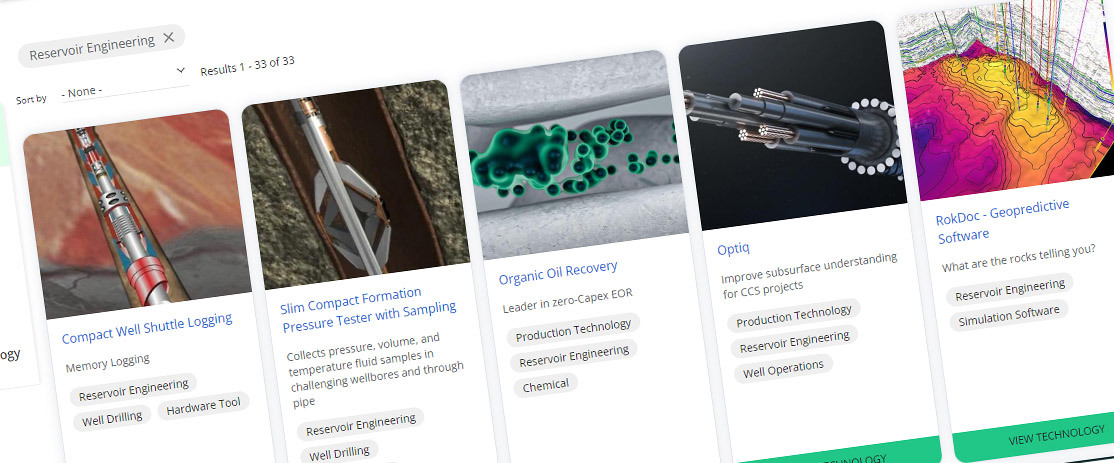
Exploration is a key area of Operators’ technology spend, as its applications offer a competitive advantage to Operators in finding new hydrocarbon resources.
Mature fields remain subject to obligations under MER UK such as shooting new seismic (4D) and improving reservoir characterisation.
Advances in seismic acquisition in previous years (high-definition broadband and ocean bottom nodes) are now complemented by the latest seismic processing and reprocessing techniques, which are awaiting more widespread application.
In addition, latest software including applications of machine learning are proving useful to increase accuracy and chance of success, reducing cycle-time and costs.
Seismic & Exploration technologies
Operators’ technology focus is increasingly on processing (and reprocessing) and subsurface modelling to increase value from acquired data to drive time and cost efficiencies
Interest in Exploration technologies is concentrated within a subset of Operators aligned to basin strategies and opportunities
7 Operators carry at least 5 Exploration technologies in their current Plans
Like in other technology areas, Operators focus primarily on deployable technologies, i.e. in Early Commercialisation or Proven stages
However, more than in other areas, Operators participate directly in the development or adaptation of over 50% of the Exploration technologies in their Plans
Readiness definitions: Early Development (TRL 1-4), Late Development/Pilot (TRL 5-7), Early commercialisation (TRL 8), Proven (TRL 9)
Fewer operators reporting high-definition broadband or OBN acquisition this year as these have become business as usual. Focus remains on continuously improving acquisition approaches (sampling density, frequency spectrum) resulting in enhanced imaging such as deeper imaging or fracture visualisation.
Advances in newer technologies such as DAS VSP continues along with ongoing efforts in cost reductions of acquiring time-lapse 4D seismic surveys. Autonomous node technology to potentially reduce cost and acquire data in spatially constrained environments.
- Multi-azimuth seismic acquisition – Acquire survey for multi-azimuth and high-angle illumination of Injectite play. Primary tool used for locating infill drilling targets.
- TRL 9 Proven Technologies
- Ultra-high density ocean bottom seismic - Densely sampled seismic data to improve reservoir imaging reduce volume uncertainty and inform depletion plan
- TRL 9 Proven Technologies
- OBN Acquisition - Ocean bottom nodes for improved seismic acquisition
- TRL 9 Proven Technologies
- TRL 9 Proven Technologies
|
Technology Example: Alwyn North OBN (TotalEnergies)- Improved imaging (input to Inversion) with better velocity model & enhanced denoise (Higher Signal/Noise ratio)
Link: TI 22 - 38. Technology Example - TotalEnergies OBN Alwyn_slides_PETEX 2021.pdf |
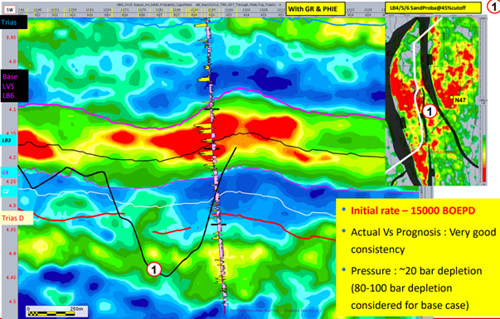 |
- Autonomous Nodes - Pilot for the use of Autonomous nodes (AUV+nodes) to deploy/recover seismic nodes on the seabed without use of ROV or cables.
- TRL 8 Early Commercialisation
- TRL 8 Early Commercialisation
- DAS VSP - This is part of a field trial for utilising “Borehole DFO” for seismic surveillance on an asset and is a first for Operator. DAS VSP technology may help to augment the future 4D seismic programme through the provision of low cost, localised and on demand seismic surveillance.
- TRL 8 (Early Commercialisation)
- TRL 8 (Early Commercialisation)
- Marine Vibrator - Marine Vibrator Pilot - Technology reduces acoustic impact on marine life
- TRL 8 (Early Commercialisation)
Increased focus on extracting maximum value from existing data. Significant advances in reprocessing techniques in recent years, with focus and spend on reprocessing of existing datasets. Reprocessing of legacy 3D seismic surveys with modern techniques.
- Diffraction Imaging and Vertical Image Projection - Seismic processing technique to better image sand injectites not observed by conventional processing. TAQA Diffraction Imaging for Fault and Sand Injectite Imaging at the Harding Fields.
- TRL 9 Proven Technologies
- TRL 9 Proven Technologies
- Extended Elastic Impedance Modelling - Extended Elastic Impedance modelling. Use advanced analysis techniques to evaluate distribution of best pay within proximal turbidite fans and evaluate potential well opportunities.
- TRL 9 Proven Technologies
- TRL 9 Proven Technologies
- Generalised Radon Transform (GRT) algorithm – Proprietary to SIP, Improved seismic processing compared to other techniques e.g. Kirchoff - uses the Generalised Radon Transform (GRT) algorithm. Reprocessing of Legacy seismic data, to improve reservoir and structure image
- TRL 9 Proven Technologies
- TRL 9 Proven Technologies
- Qeye inversion - Quantitative seismic AVO inversion. Convert seismic data from amplitude at an interface to layer properties, calibrated by well log
- TRL 8 Early Commercialisation
- TRL 8 Early Commercialisation
- IKON JiFi inversion - Proprietary IKON JiFi inversion using Proprietary 2018 reprocessed 3D seismic data to better delineate the reservoir facies distribution across the Cook Field and improve Prospect evaluation in the Cook West / Chef Prospect area.
- TRL 9 Proven Technologies
|
Technology Example: Joint Impedance and Facies Inversion technology Ikon’s “Ji-Fi” overcomes these pitfalls by recasting the seismic inverse problem as mixed discrete/continuous TI 22 - 3. Technology Example - Ikon Science JiFi.docx |
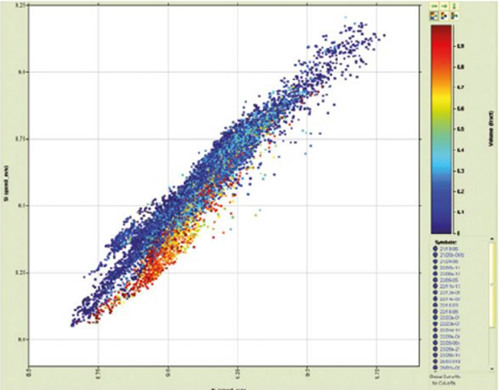 |
- Advanced Seismic Interpretation Tools - New generation algorithm. Improves speed and quality of auto-tracking of seismic horizons.
- TRL 4-7 Late Development/Pilot
Subsurface Modelling continues to show increasing number of new technologies being adopted on greater number of assets. Operator focus is on technologies using AI and Machine learning, and advanced analytical methods of improving knowledge of reservoir geology and previously hidden volumes.
- Baker Visitrak - Improved resolution and interpretation of existing and new data to improve modelling accuracy and reduce risk, geospatial reservoir navigation and analysis service. Tool used when drilling to see up to 150 feet (45.7m) from wellbore. Real-time 360 view of wellbore reducing seismic uncertainty in real time
- TRL 9 Proven Technologies
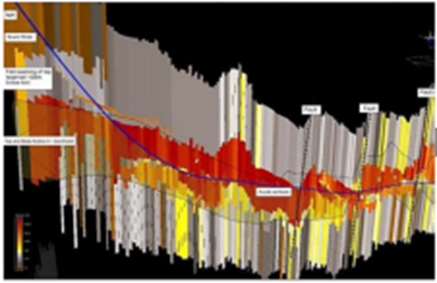
Technology Example:
The VisiTrak™ geospatial reservoir navigation and analysis service lets you see more of your reservoir – a 360° view of the wellbore from up to 150 feet (45.7 m). You’ll know exactly where you are and where you need to go to build a better well.
Link: TI 22 - 39. Technology Example - Baker VisiTrak.pdf
- TRL 9 Proven Technologies
- Pickasso – Pickasso is an Operators proprietary version of Bluware’s InteractivAI- seismic interpretation powered by machine learning
- TRL 9 Proven Technologies
- TRL 9 Proven Technologies
- COVIZ for 4D - software for subsurface reservoir management visualisation and integration - Integration and Interrogation of all available data (seismic, well, modelling 2D/3D/4D),
- TRL 9 Proven Technologies
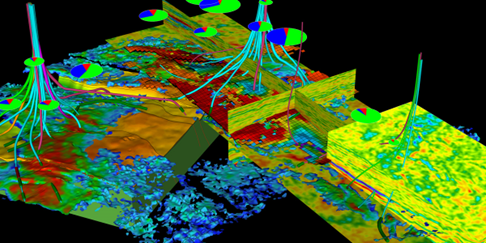 |
Technology Example: CoViz 4D makes it possible for multi-disciplinary asset teams to simultaneously view and interrogate all available data from seismic to simulation, regardless of the original data source. CoViz 4D allows users to visualize and understand how development decisions affect the reservoir throughout the history of a field. Link: TI 23 – 13 Technology Example – CoViz 4D subsurface reservoir visualisation and integration software.docx |
- AI/Machine learning application of learnings from ongoing collaboration with ENRGeo. ENRGeo - utilising AI/ML solutions for advanced seismic interpretation and subsurface modelling
- TRL 5-7 Late Development/Pilot
- Timelapse 4D seismic project with Heriot-Watt University (Edinburgh Time Lapse Project) - Developing tools and techniques for timelapse qualitative seismic interpretation / evaluation to monitor the water saturation and pressure changes in the reservoir and identify remaining oil areas. This is now actively used by Operator.
- Technologies at various stages







